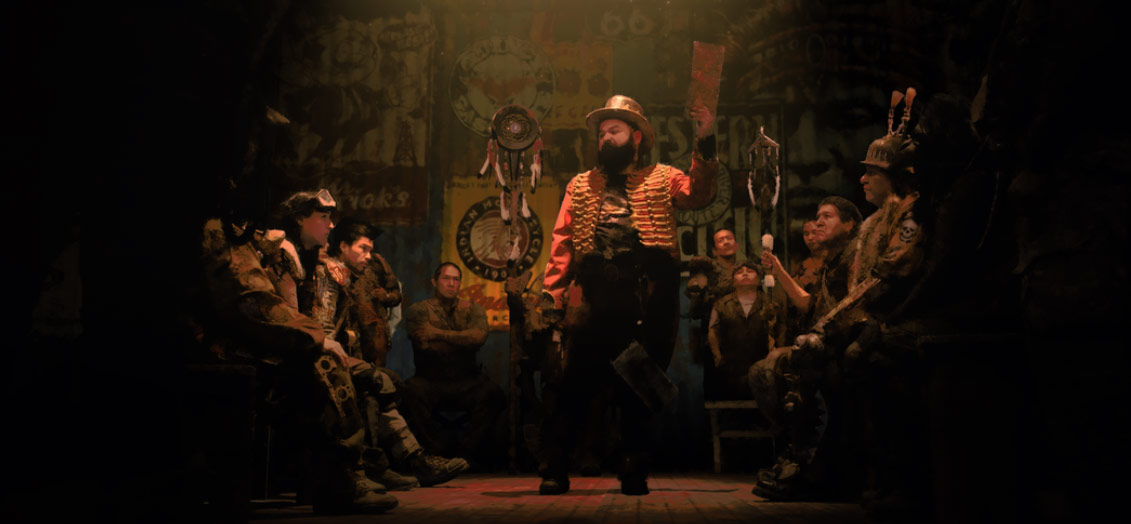THE PROCESS OF CREATING THE WORLD OF MMRG
+ INPUTS
All the characters in the film were shot against a blue screen and that footage was transferred to Saffronic. On receiving the input, the Saffronic VFX Team began the plate cleanup process using Chroma Keying, Rotoscoping and Paint.
In Parallel, the Asset Team was involved in building the props and sets required for the story. The entire set of MMRG which includes vehicles, environment props, and digital matte painting was all done through the magic of CG.
Mastering the vehicles was crucial as they are central to the storyline. Every vehicle has a unique design including armor and defensive tools and in Waldrop’s story they are assembled from various stolen parts. Each vehicle had varied maneuvers that made for a challenging and complex Rigging process.
The plot requires huge crowds of spectators something that is traditionally costly to produce in CG. To get around this, Saffronic enlisted the help of Trioscope by asking them to film a single shot of the characters, lined up in a row using multiple cameras from different angles. Saffronic then took this footage and rearranged the characters, multiplying different action shots of the crowd and tracked the progress of the characters’ layers.
+ STAGES OF PROCESSING
Live-action camera shoot information was exported as CG Data using Nuke and imported into Maya to replicate the camera movements.
The next stage of the process was to perfect the CG sets which needed to be positioned and built with exact proportions as they would be in the real world so they would have seamless integration with the live-action characters.
The team had to match the live-action movements of the vehicles. The most complex part was the need to mimic the accurate scale and proportions of each vehicle for which the available live-action footage was limited.
All elements like smoke, debris, dust, and fire were created using FX and treated in the Compositing stage which was later integrated into the footage.
Crowd shots were cleaned, processed, and made ready for camera tracking as per the shot requirement.
Unlike conventional processes, we applied the SEE ® Tool in the asset stage so the client was able to analyze the look and feel of the props and environment before the final compositing. This helped to reduce the number of iterations meaning assets could be developed faster with a quicker approval process.
This was also a major advantage as it gave both the Saffronic and Trioscope Creative Teams a chance to see the visual comic book style before final approval.
“Trioscope’s toolset opens up a whole new gateway of creative choices filmmakers have at their fingertips. It not only expands the visual library but allows the storytellers to dial into a specific look that best frames the story they wish to tell. In short, Trioscope has developed a creative game changer in visual storytelling”, says Kevin Johnson, Executive Creative Director at Saffronic
“The Trioscope tools are a boon for animation and live-action filmmakers, enabling them to infuse their work with a distinctive artistic touch and unleash limitless imagination!”, says Chandrasekaran Gopinathan, Creative Director at Saffronic
+ FINAL OUTLOOK
The final compositing stage involved combining CG Renders of the animated action including crowd and FX elements. Color correction and integration of the live characters in the CG Environment were done before adding the final layers processed via Trioscope’s SEE® tool.


